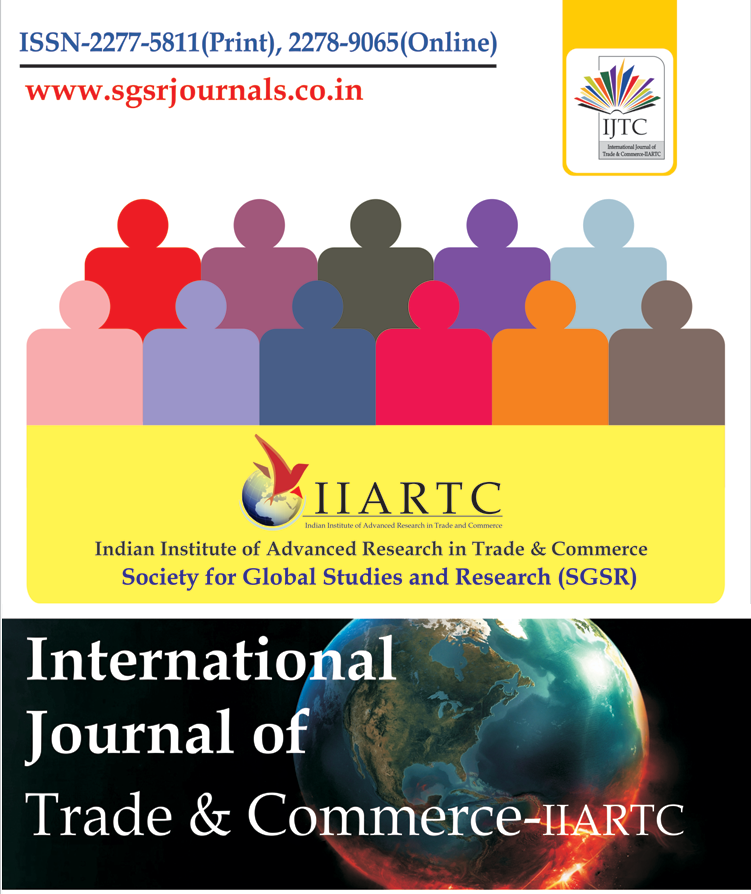Home ⇨ International Journal of Trade & Commerce-IIARTC

International Journal of Trade & Commerce-IIARTC
Impact Factor (IF):5.135 (COSMOS), IF:7.249 (ISRA), IF:3.721 (ISI)
ISSN:2277-5811 (P), ISSN:2278-9065 (O)
Frequency: Half Yearly
Mudra Bank And MSME : Challenges & Prospects
MSME’s play very critical role in achieving higher industrial growth as well as in employment generation. Jobs generated by MSME outnumber the large companies. Organised sector and larger companies employ only 1.25 crore individuals. Clearly, the potential to harness and nurture these micro businesses is vast and the government recognizes this. Mudra Bank has a great potential for achieving inclusive growth and ‘Make In India’ objectives. It is going to spur rural economy and encourage entrepreneurs. MUDRA Bank is bound to spur growth of the MSME Sector and help them increase their contribution to the country’s gross domestic product from its current level of 38 percent. Union minister for micro, small and medium enterprises (MSMEs) Kalraj Mishra said that MUDRA Bank would prevent small entrepreneurs from the exploitation of money lenders. In the present paper, the author tried to find out various challenges to be faced by MUDRA Bank relating to provide finance to MSME. The author also made serious efforts to find out the prospects bank to provide more funds to MSME sector.
Author:Vikas Kumar a*, R.S. Singhal b
Abstract:MSME’s play very critical role in achieving higher industrial growth as well as in employment generation. Jobs generated by MSME outnumber the large companies. Organised sector and larger companies employ only 1.25 crore individuals. Clearly, the potential to harness and nurture these micro businesses is vast and the government recognizes this. Mudra Bank has a great potential for achieving inclusive growth and ‘Make In India’ objectives. It is going to spur rural economy and encourage entrepreneurs. MUDRA Bank is bound to spur growth of the MSME Sector and help them increase their contribution to the country’s gross domestic product from its current level of 38 percent. Union minister for micro, small and medium enterprises (MSMEs) Kalraj Mishra said that MUDRA Bank would prevent small entrepreneurs from the exploitation of money lenders. In the present paper, the author tried to find out various challenges to be faced by MUDRA Bank relating to provide finance to MSME. The author also made serious efforts to find out the prospects bank to provide more funds to MSME sector.




